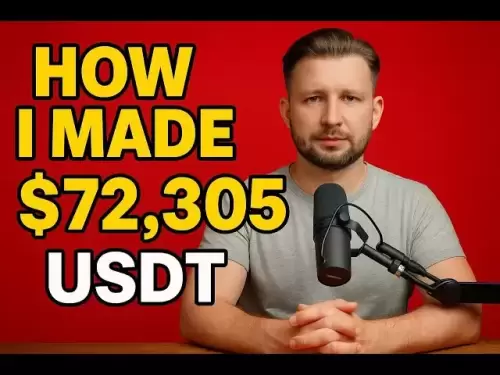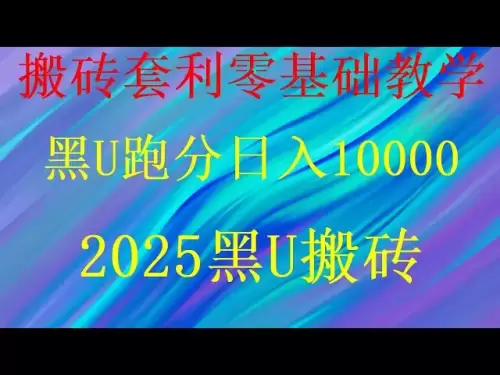 |
|
 |
|
 |
|
 |
|
 |
|
 |
|
 |
|
 |
|
 |
|
 |
|
 |
|
 |
|
 |
|
 |
|
 |
|
Cryptocurrency News Articles
Bitcoin Solaris Introduces Turing-Complete Smart Contracts to the Blockchain
May 16, 2025 at 07:44 pm
Tezos introduced formal verification into blockchain with its Michelson smart contract language, prioritizing safety and predictability.

Tezos (CRYPTO: XTX) has made great strides in introducing formal verification into smart contract languages, with its Michelson language placing a strong emphasis on safety and predictability in blockchain applications. While ideal for simple, logic-bound contracts, Michelson’s limited syntax and non-Turing-completeness can limit its use in more advanced, dynamic use cases that require the flexibility of a standard programming paradigm.
Bitcoin Solaris (BTC-S) addresses this constraint by deploying a Turing-complete virtual machine (VM) across its execution layer, enabling the creation of highly complex and flexible smart contracts that can scale across diverse technological verticals.
With native support for full arithmetic logic, loop conditions, recursion, and state management, the Bitcoin Solaris VM expands the possibilities of smart contract design to encompass a wide range of real-world use cases.
When combined with the protocol’s high throughput and formal auditability, this system creates the foundation for deploying and coordinating large-scale, cutting-edge technologies, such as automated financial instruments, industrial IoT coordination protocols, and secure data marketplaces.
Dual-Layer Execution Engine Designed For Programmability
Bitcoin Solaris leverages a dual-layer architectural framework, specifically designed for efficient separation of concerns. The Turing-complete VM is seamlessly integrated within the Solaris Layer.
Unlike Tezos, where smart contract logic is confined by the static structure of Michelson, developers on Bitcoin Solaris can implement the full scope of program logic, including data-driven conditions, on-chain oracles, dynamic memory allocation, and recursive state functions.
This unmatched flexibility is crucial for supporting advanced tech protocols that necessitate real-time contract updates, adaptive logic based on external factors, or multi-party coordination in a single, atomic transaction.
Bitcoin Solaris supports modern development workflows through a high-level language abstraction layer, enabling smart contracts to be written in common programming languages, which are then compiled down into secure bytecode.
The platform also includes support for:
* A standard library with reusable modules and functions.
* Built-in tooling for simulating contracts across various states, allowing developers to test edge cases and ensure optimal gas efficiency.
* Dedicated tooling for applying formal checks during deployment and integrating contracts with external systems.
Together, these capabilities eliminate the friction faced by developers building on platforms like Tezos, where achieving even moderate levels of complexity can require significant workarounds and limit the potential of smart contracts.
For those in the advanced tech sphere, focused on technologies like deep automation, AI coordination at the protocol level, or rapid DeFi triggers, the Solaris VM architecture allows for the direct and efficient implementation of these use cases at the contract layer.
Crypto Legends recently analyzed the practical limits of Michelson and how Bitcoin Solaris’s Turing-complete VM resolves common development bottlenecks encountered by Web3 developers. The video also explores real-world examples where advanced contract logic is required.
Security Verified Across Layers And Execution Pathways
The reliability of smart contracts depends not only on their programmability but also on the secure runtime environments in which they operate. Bitcoin Solaris’s entire infrastructure, from its lower-level modules to the finality safeguards, has undergone multiple rounds of comprehensive audits.
These audits confirm that the VM logic, execution constraints, and administrative keys are all compliant with best practices in cryptography, applied mathematics, and computer science.
They also place strong limits on gas manipulation risk, a core requirement for deploying and coordinating large-scale, advanced tech use cases.
Bitcoin Solaris is currently in Presale Phase 3, with BTC-S tokens priced at 3 USDT. This stage offers early access ahead of the public contract registry launch and before developer grants are issued for building within the Turing-complete VM ecosystem.
The total supply is fixed at 21 million BTC-S, with 4.2 million tokens (20%) allocated for presale. There is no inflation, and token distribution is tied to mobile mining and validator engagement.
Disclaimer:info@kdj.com
The information provided is not trading advice. kdj.com does not assume any responsibility for any investments made based on the information provided in this article. Cryptocurrencies are highly volatile and it is highly recommended that you invest with caution after thorough research!
If you believe that the content used on this website infringes your copyright, please contact us immediately (info@kdj.com) and we will delete it promptly.
-

- Can $8,000 Really Become $720K? BTFD’s Final Presale Days, DOGE’s Weekly Climb, and SHIB’s Steady Rise Rank Them Among the Best Cryptos to Stake
- May 17, 2025 at 07:30 am
- Explore the best cryptos to stake including BTFD’s $720K moon potential, SHIB’s steady growth, and DOGE’s weekly rally as BTFD’s presale nears its end.
-

-

-

-

-

-

-

-

- An Alabama man was sentenced on Friday to 14 months in prison for hacking the Securities and Exchange Commission’s X account
- May 17, 2025 at 07:10 am
- An Alabama man was sentenced on Friday to 14 months in prison for hacking the Securities and Exchange Commission’s X account and passing control to someone who used it to falsely claim the agency had approved spot Bitcoin ETFs.



























































